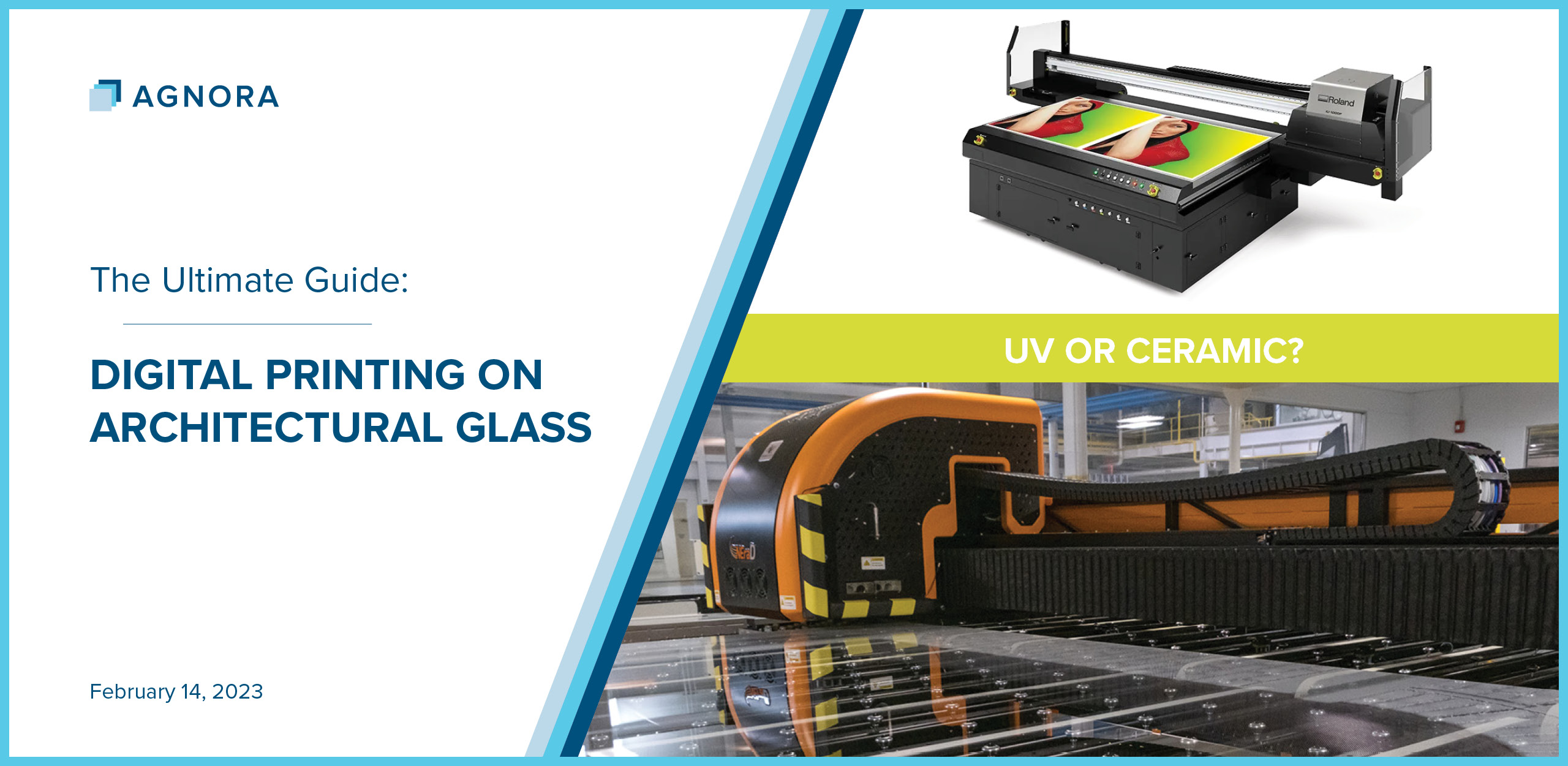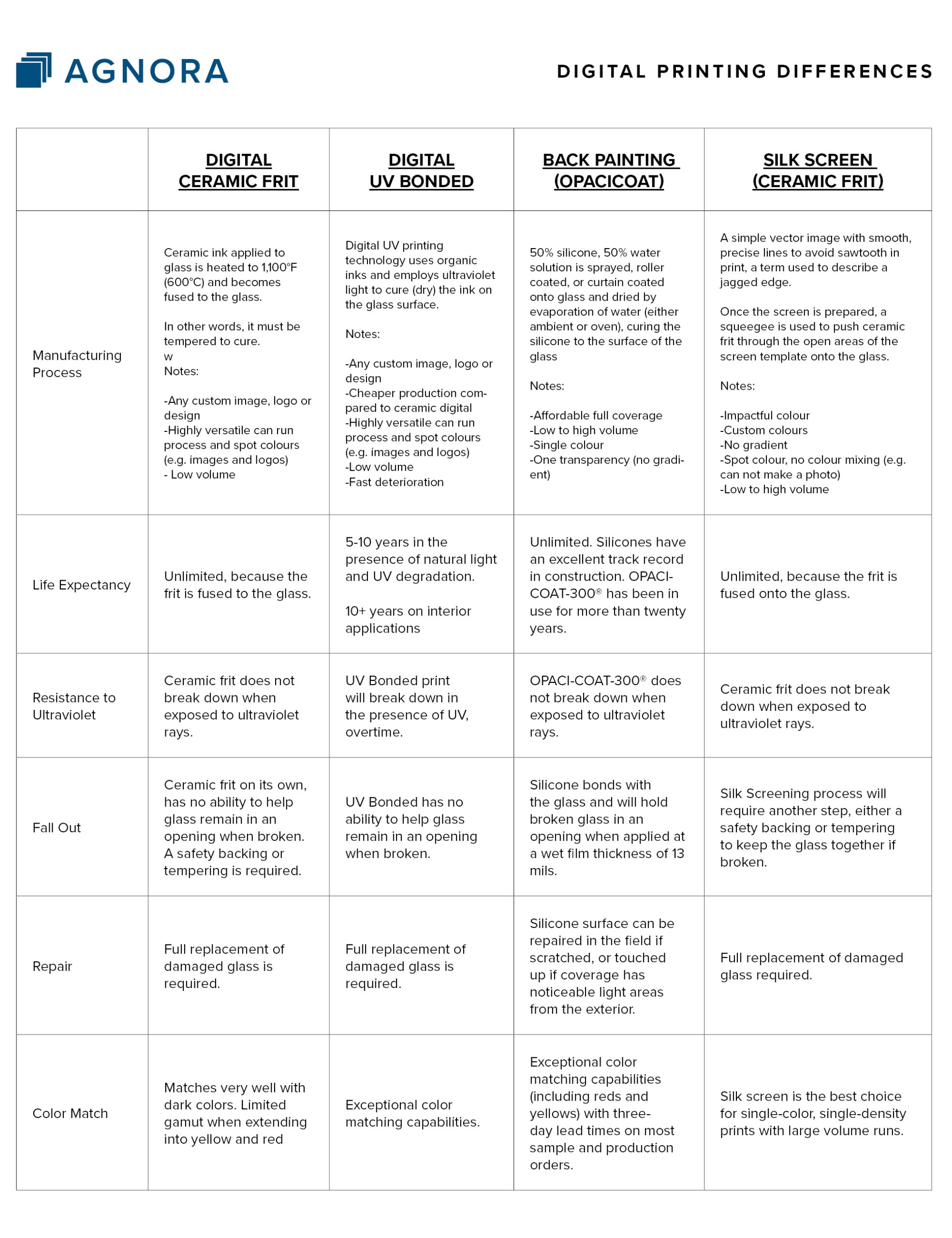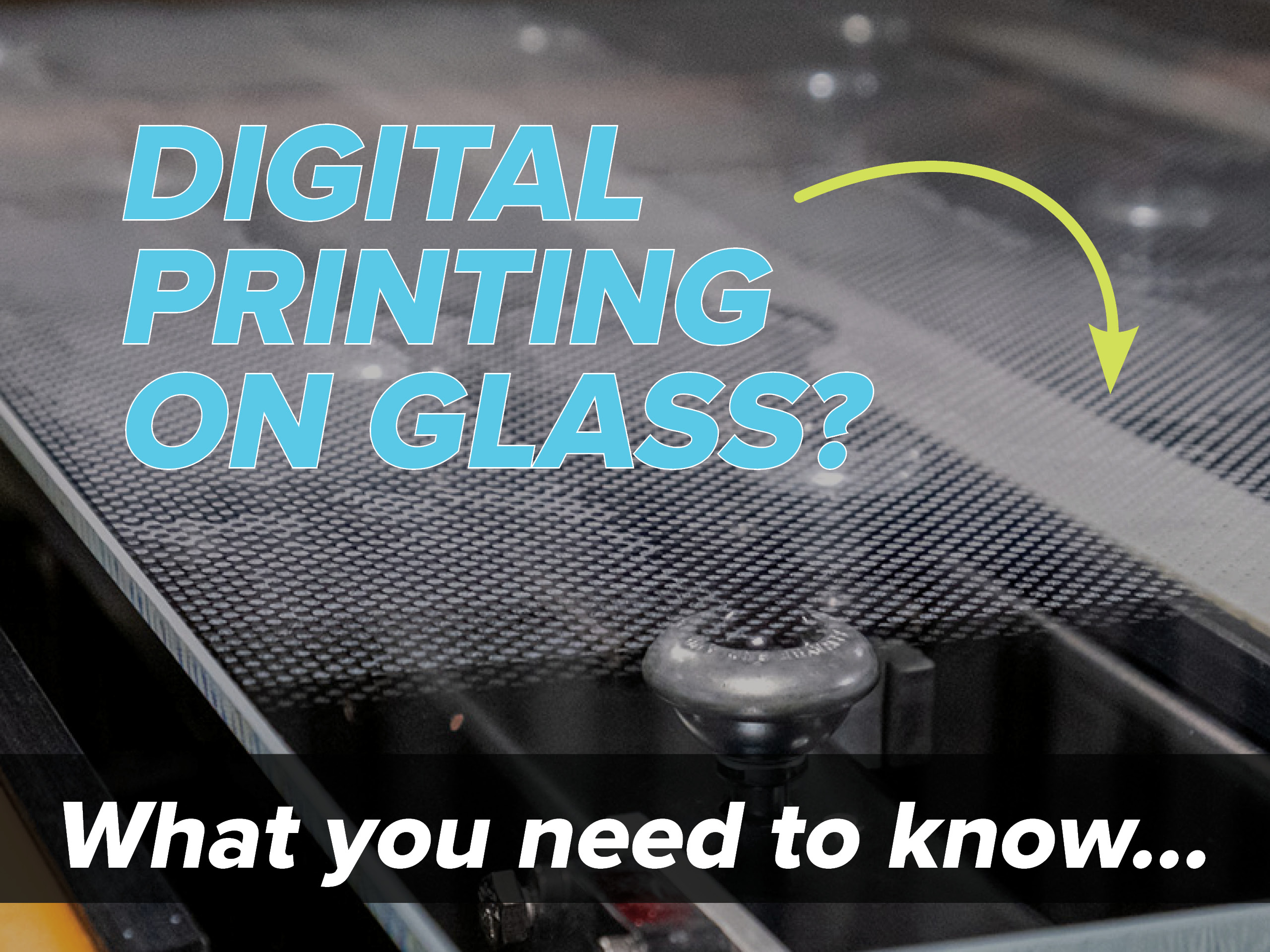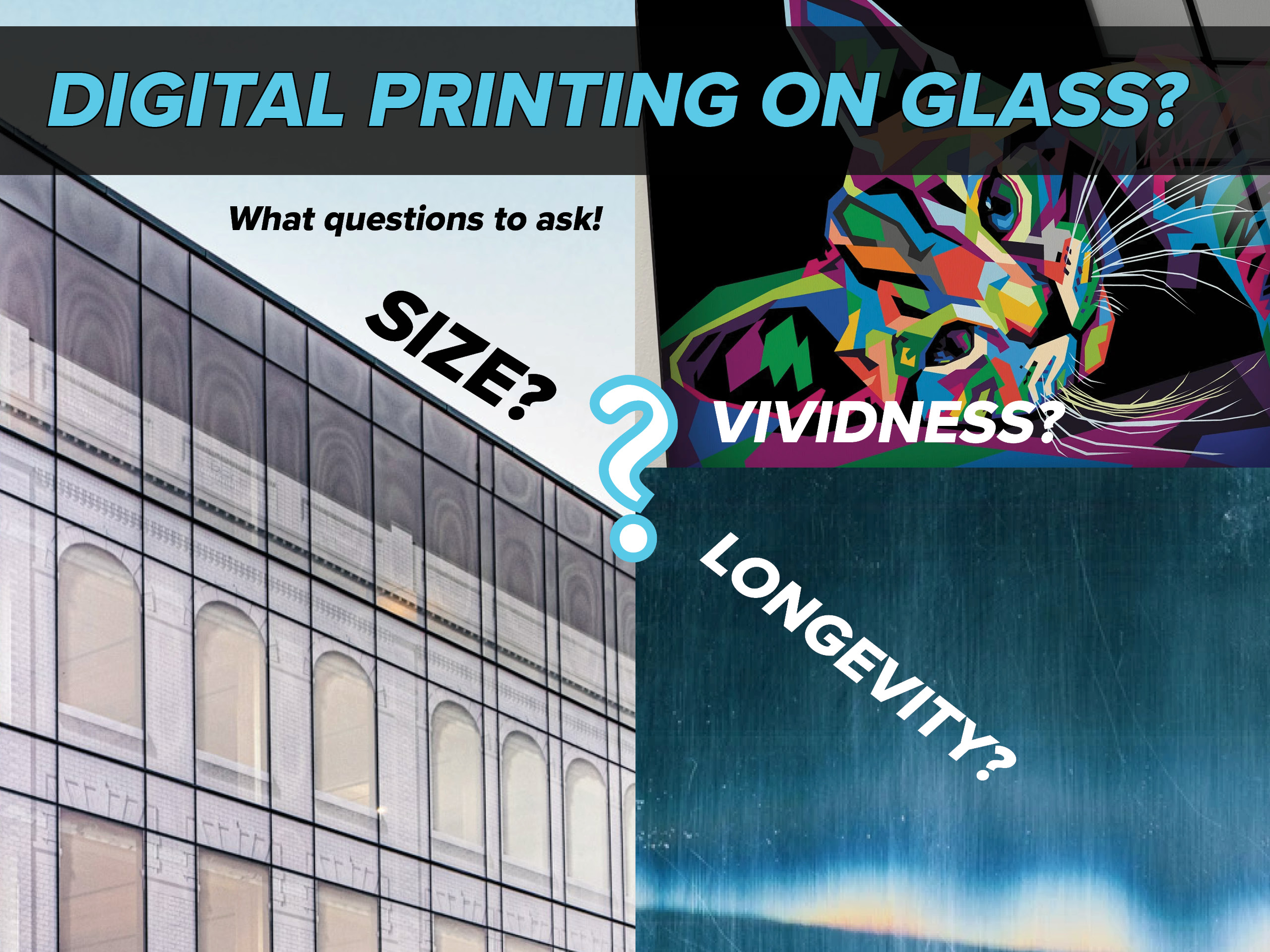
Tuesday February 14, 2023
The Ultimate Guide to Print on Glass
This article explores the differences between different types of digital print and roller-coated print on glass.
Typically these are used for glass spandrel, decorative glass installation, or as custom frit to hide mechanical/fastening components and also as bird deterrents. Not all digital print on glass is the same, and the goal of this article is to provide a working guide for you to make smart, decisions about print on glass.
TABLE OF CONTENTS
Supporting Videos
The Challenges of Printing on Glass
When considering a large format print project, there are certain standards which are adhered to.
The Pantone colour standard and other colour management designations such as G7 are prime examples. Extended colour ranges beyond CMYK (cyan, magenta, yellow and black) are also commonplace, and you may find yourself with a wider, more precise colour gamut by adding light cyan, orange, or light magentas.
You want that Coca-Cola red? That Walmart blue? No problem! High-end print providers can nail those brand specifics.
BUT digital printing on glass has none of that.
- The printers are bespoke, expensive, and limited.
- The glass printing industry is a speciality area and is supported by a small team of skilled technical experts
- The print engines or “rip software” are custom with inherently steep learning curves and specific knowledge
- The colour gamut can vary from CMYK and is often proprietary to the print manufacturer
- Takeovers and mergers seem to be higher in the glass printing industry as small printer companies get bought, and ink suppliers change rapidly
- Glass acts very differently with inks than other materials such as vinyls or fabrics therefore demanding a higher level of innovative solution-oriented thinking.
Why am I telling you all of these seemingly big drawbacks? Because it lays the foundation for you to understand what to expect from direct-to-glass printing, the challenges that these types of specialty fabricators face, and the dedication you can expect from the companies that do it. I hope that by the end of this article, you will have the confidence to ask the right questions and guide the project owner.
Know Your Ink Types
One of the first thing to note is the variation in ink types as well as print types and their strengths and weaknesses. For architectural glass the following are available:
- Digital printing on glass (i.e. short run custom printing, images, text, and illustrations)
a. Ceramic Frit
b. UV Bonded - Back Painting (i.e. short or high volume full coverage)
- Silk Screening (high volume)

The Digital Printing Questions to Ask Yourself and Your Client
If you are applying full coverage, you have a proven colour system, colour matching and ink longevity.
If you are custom printing you may have to ask yourself a few questions to know what you’ll be asking and receiving from your print partner
- 1. Will the project be indoor or outdoor? Present with natural light or protected?
a. Colour fastness: How susceptible inks are to UV degradation?
b. Ceramic inks are not prone to fading or cracking, while UV inks are prone to fading, especially in reds and yellows (all UV susceptible ink)
c. Indoor applications are typically viewed close-up and require higher resolution artwork to be of acceptable quality.
- 2. What is the required colour?
a. Opacity: How “see through” is the ink? 100% opaque is full coverage, while 0% is no ink at all. Both digital print methods provide values from 0-100%.
b. Gradients: The “shading” from one opacity value to another for a given area. Both print technologies provide robust gradients devoid of “banding.”
c. Colour gamut: The range of available colours. Ceramic inks have a reduced range of colours notably in the reds and yellows; however, specialty inks can be mixed in order to achieve a desired colour (brand, colour library such as Pantone). UV inks provide a wider gamut of colour and can easily match to existing colour libraries.
d. Photorealism vs abstract: Reproduction of photographs and their inherent range of colour are available for both ink types. UV inks tend to reproduce real-life images better (due to colour). Both ink systems produce abstract (illustrations, drawings, vector artwork) well.
- 3. What is the overall size?
a. Size: The overall available sizes for North American facilities are 130”x300” for ceramic based inks (AGNORA) and 77”x118” [Goldray] for UV based inks (Goldray).
b. Alignment: If there is a single image spread across multiple lites, how is the image aligned? Top, middle or bottom? Will the image be cropped in the case of different sized lites?
c. Edges: Is the print against the edge? Is there a chamfer? Is the glass custom in shape, and do edges need to align perfectly if no mullion is present?
- 4. What are the special considerations you need to address?
a. Installation logistics: Is this a first surface ceramic print? Does your install team understand to not apply suction on printed surfaces?
WORK WITH THE RIGHT DIGITAL PRINTING PARTNERS
Experienced digital print companies such as Goldray Glass and AGNORA work to create transformative glass spaces. Decorative print is exceedingly difficult and requires a great level of detail.
Thus, working with companies you know will be at your side when you need a replacement, answering questions, as well as being here “tomorrow,” goes a long way in overall support. A broken lite 10 years down the road may be a pain to match, however, high-quality glass printers will always output a replacement, especially if they were the originating firm.
Hopefully, this article has provided insight into the different print processes available for architectural glass, the strengths of each, and considerations that must be taken into account when bridging client needs with fabricator capabilities. Having some or all of these considerations answered will streamline the print process and, with a little hard work, exceed expectations.

